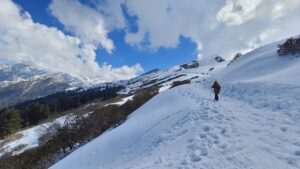The next day we reached Ajanta Caves.
The “Ajanta Caves” are a UNESCO World Heritage Site located in the Aurangabad district of Maharashtra state in India.These 29 rock-cut Buddhist cave monuments date back to the 2nd century BCE to about 480. The caves are ancient monasteries (Viharas) and worship-halls (Chaityas) of different Buddhist traditions carved into a 75-metre (246 ft) wall of rock. The caves also present paintings depicting the past lives and rebirths of the Buddha, pictorial tales from Aryasura’s Jatakamala, and rock-cut sculptures of Buddhist deities.
There are 30 Caves at Ajanta that lie to the north of Aurangabad in the Indhyadri range of Western Ghats. The caves, famous for their temple architecture and many delicately drawn murals, are located in a 76m high, horseshoe- shaped Caves overlooking the Waghora River.
Sharing my memorable moments which was a one of its kind of experience being able to view one of the magnificent Wonders of the World dated back to 2nd Century BC. Pictures are clicked from my phone
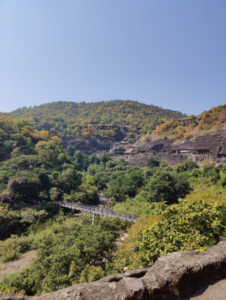
A VIEW OF THE CAVES ALONG THE HILL.
The Ajanta Caves are listed by UNESCO as World Heritage Site. It is a 5th Century old structure. We can still see the Fresco Paintings on the walls and the beautifully carved structures and pillars. Prayer places with statues of different avatars of Budha.
When we reached there, there were not enough guides and had to share one from another group. So, its better to go there after booking a good guide. As its all about visiting these historical places are how well the person is good at story telling as its history and lots of factors and incidents that overlap over a huge timeline.
Cave 1
This is a Vihara (monastery), therefore squarish in plan consisting of an open courtyard and verandah with cells on each side, a central hall sided by 14 cells, a vestibule and Garbha Griha (Inner Sanctum).
It contains the famed paintings of Bodhisvattas Padmapani and Vajrapani along with a seated figure of Buddha in dharma chakra pravartana mudra in the sanctum.

Jataka Story in Ajanta
Cave 2
This vihara consists of a porch with cells on either side, a pillared hall bound by 10 cells, an antechamber and Garbha Griha. Most importantly this cave contains two sub-shrines. Buddha in the main shrine is flanked by two yaksha figures – Sankhanidhi and Padmanidhi.

BUDDHA SCULPTURE. A SHRINE.
The largest Vihara in Ajanta is I think Cave 4, it has its façade richly ornamented with sculpted figure of Bodhisvatta as a reliever of eight great perils among others. As usual, construction follows the basic pattern of a pillared verandah with adjoining cells leading to a central hall sided by another group of cells , an antechamber and finally Garbha Griha


INSIDE CAVE 6. THE PRAYER HALL. CAN SEE THE REMAINS OF FRESCO PAINTINGS.
It would have been a beautiful Shrine and a Prayer hall with beautiful fresco paintings.

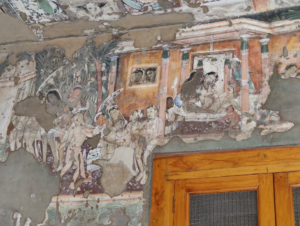
FRESCO PAINTINGS OUTSIDE THE CAVE 17
An exemplary collection of paintings and architectural motifs is preserved in this vihara . It has an enshrined image of Buddha.


Intricte and delicate designs of ornaments. These are some of the works of fresco paintings that can be seen very clearly. I had to tell myself again and again the time period these were made, the number of years and centruries that have passed and we are so fortunate to be able to visit these places and visualize it.


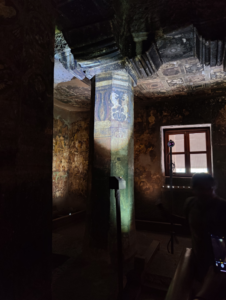
Some more of the fresco paintings pictures depicting human figures which tell stories, animals and designs. Beautiful visual treats of our past and history. How thoutful and creative were the artisans who built these.
Cave 19 -Entrance to the cave 19. So intricatly carved out. The façade of this chaitya is splendidly decorated with various carved figures and decorative motifs.
Buddha offering his begging bowl to his son Rahul is depicted close to the entry door. Also, two life size yaksha figures are sculpted on either side of the chaitya arch.

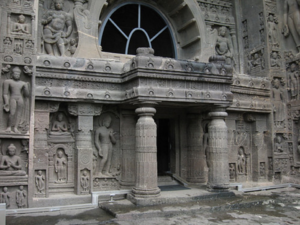

Inside, the apsidal plan divides the space into a nave separated by a colonnade of 17 pillars from aisles with the apse at the terminal end housing the stupa. A standing figure of Buddha is carved at the front of the stupa whose umbrella-like crown almost touches the vaulted roof. The triforium is elaborated with figures of Buddha in different poses. A prayer hall.


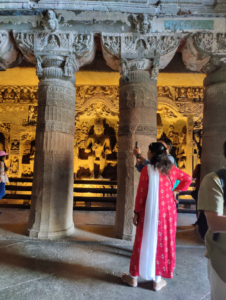
Pictures Remains of Fresco paintings after restoration.

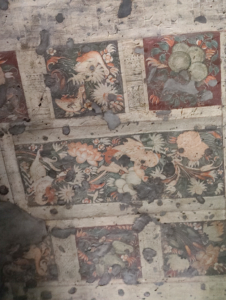
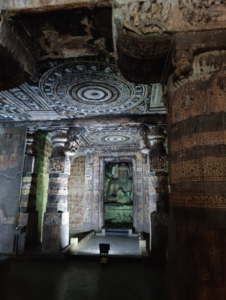


Though much has been irreparably damaged, a few debatable and, in all possibility, misplaced inferences have been drawn, it is through the combined efforts of many artists, archaeologists, historians, conservationists, geologists and antiquarians that the caves of Ajanta with all its grandeur and compassionate attitude continue to enthrall and comfort the nameless many.

It was a visual treat for eyes and ears with the guide taking us through the Viharas and Chaityas with stories of yester years, Ancient times and lives of people through our Rich Cultural Heritage.


